If your organization is not meeting expectations, questioning employee accountability might seem like a logical first step. However, as a Fractional Chief Human Resources Officer (CHRO), I have learned that issues with business performance often originate from a higher level, leading to communication challenges that you must resolve with finesse. In this post, I will explore accountability in the workplace—what it means, why it might feel elusive, and its value. Then, I will share the steps you can take to foster a culture of accountability that fits your environment.
Table of Contents
What Does Accountability Mean?
Accountability is the state of owning the results of your actions. It involves recognizing that you make choices as you interact with others and fulfill your duties, and that those choices impact outcomes. That differs from simply accepting the responsibility or obligation to complete specific tasks or jobs. This subtle distinction can be difficult to grasp, but please bear with me because it is essential to this discussion.
Although you might think accountability is implied when someone agrees to take on a responsibility, people don’t always share that view. In certain situations, they may do what you ask—no more, no less—and feel completely disconnected from the results. That can be especially true when someone believes they have no say in which tasks to prioritize, how or when to perform them, and, therefore, little opportunity to influence the outcome.
Accountability in the Workplace
Accountability is crucial in our personal and professional lives. However, while cultural norms often suggest that accepting responsibility is synonymous with accepting accountability, the hierarchical nature of the employer-employee relationship can obscure that connection at work.
For example, if you hire a customer service representative and give them a script for answering customer queries, they might think they must follow it verbatim. If following your instructions leads to unhappy customers, they may not feel they should be held accountable. After all, they followed your script.
If you don’t explain precisely what you expect, what success looks like, when they will have ownership of decisions, and how you will hold them accountable, you will likely be disappointed. In other words, expectations must be crystal clear to build a dynamic, collaborative, high-performing team where employees feel accountable for driving results.
Although that may sound relatively straightforward, building a culture of accountability can require change. Many companies start small and grow organically, with early employees assuming multiple roles. Leaders don’t always stop to think about what kind of organization they want (from a talent perspective) and how that can help them achieve their goals until they have a problem. That oversight can lead to frustrating outcomes, a lackluster work environment, and disenchanted employees who don’t understand why you are disappointed.
Change can be hard, but if you consider the benefits of accountability in the workplace and the consequences when it is lacking, you will see that it is worth it.
What are the Benefits of Workplace Accountability?
- A Cohesive Leadership Team—Nurturing workplace accountability requires a disciplined approach to setting goals, developing strategies, hiring, and communicating expectations. This valuable process will help your leadership team become more aligned. When you are all rowing in the same direction, you will be more productive and perform at a high level.
- Happier Employees—When expectations are clear, everyone understands their daily responsibilities, what to anticipate from their colleagues, and how their contributions will lead to rewards and career advancement. That leads to higher employee retention and a stronger workplace culture, where team members share common objectives, trust and support one another, and feel at ease giving constructive feedback, accepting criticism, and being creative.
- A Culture of Trust—When you clarify expectations, what success looks like, and who has ownership, you build a culture of trust. You can trust that your expectations are clear, your team can trust that they know what success looks like and can autonomously work towards it, and you are now free from micro-managing.
- Enhanced Business Performance—When teams take ownership and pride in their results and feel comfortable discussing and brainstorming solutions to inevitable challenges, they are more likely to drive progress for the entire organization.
What Challenges Arise from a Lack of Accountability?
If your company lacks accountability in the workplace, the opposite can be true, leading to challenges like this.
- Dissension Within Your Leadership Team—Leaders who lack a shared understanding of what they are responsible for, how it connects to the whole, and what success looks like will cause dissension. That puts you at risk of failing to meet your business goals.
- Difficulties Retaining and Hiring Employees—When employees lack clarity on how to succeed or what to expect from their coworkers, morale and motivation can decline. That can lead to a damaging cycle of poor performance reviews, limited development opportunities, employee retention problems, and a negative employer reputation that makes it difficult to attract talent.
- Lackluster Business Performance— Disengaged teams are less likely to trust each other, show accountability, and perform well, which could affect your organization’s ability to meet its goals.
How to Create a Culture of Accountability in the Workplace
Given these stakes, of course, you will want to encourage accountability in the workplace.
Human Resource Infrastructure 360°™
Don’t let costly human resource issues creep up on you. Learn about the 5 components of HR Infrastructure 360°™ - our proprietary framework for building and supporting your team.
However, saying you want accountability and integrating it into your company’s values, culture, and everyday behaviors are different. To make accountability a practice, you must be intentional. Set clear expectations for each team and role within the organization and model accountability examples at work functions and through your everyday actions. Make it clear that you will reward this behavior and that it is okay to make mistakes.
Here are some steps you can take to make that possible.
1. Clarify Your Company Vision
Document your company’s purpose. What exactly are you trying to achieve, and what does success look like? For example, if your goal is to become the leading provider of a specific product or service, how will you measure that? Is it about volume and profit, or do you want to focus on a particular market segment that will pay a premium for quality?
2. Build Your Strategy
What steps must you take to succeed, and how long might it take? Which initiatives will you prioritize, when will you implement them, and what type of talent will you need to make it possible?
This is an excellent time to engage in an organizational design exercise. Through this process, you will identify the skills you need, when you will require them, and how you will encourage all employees to embrace a collaborative culture of accountability where they can perform at their best and bring your vision to life. That will empower your leaders to work together more effectively.
3. Set Measurable Individual Goals and Awards to Align with Organizational Goals
Since fostering accountability in the workplace begins with leadership accountability, establish measurable goals for your management team that align with your overarching vision. Some of these will serve as key performance indicators (KPIs) to review in each executive meeting, while others may simply indicate progress. Once your leadership team understands what you are holding them accountable for, they can do the same for the people who work for them. Then, you can create a compensation strategy that links goal achievements to rewards.
4. Create a Performance Management Cadence to Match Your Accountability Framework
Establish the appropriate tracking to monitor progress. Then, set clear expectations for managing performance. How often should managers meet with employees? How many of those meetings will focus on tracking goals for success? How will you create a feedback loop that rewards continuous improvement, allowing both parties to safely give and receive constructive input, celebrate wins, and adjust expectations and behaviors as the business requires?
Workplace Accountability Examples

One of the challenges you will likely encounter when working on employee and team accountability is that every discipline and industry is unique. That can complicate steps three and four. While timeliness or certain communications may demonstrate accountability in one environment, other behaviors may be more important in another. To illustrate this point, let’s look at two examples of accountability at work.
Imagine you operate a professional services firm that provides highly skilled consultants to clients seeking to fill specific roles. Your consultants are experienced professionals with extensive knowledge who expect autonomy. However, to build a profitable business and ensure a consistent client experience, you must set parameters that will vary depending on the roles within your organization. Here’s how that might unfold.
Consultant Expectations
For your consultants, you might keep goal and management guidelines high-level, emphasizing the communications you expect to keep everyone on the same page. For instance, here are a few things you might clarify:
- The onboarding process: What should happen 30, 60, and 90 days after the engagement begins? How do you expect consultants to share their progress, and what should happen if they can’t meet deadlines?
- Reporting structure and frequency: What reports will you provide clients, and when? What reports will your internal management team receive, and how often? How frequently should consultants meet with their managers and attend team meetings?
- The definition of a successful engagement: What metrics will you use to measure results, and why are they important? How will you reward employees for a job well done?
- Decision-making: What types of decisions are your consultants free to make? What decisions would you expect them to escalate to the firm’s leaders?
Internal Expectations
Other functions within this organization, such as your finance and accounting team, will have significantly different roles and responsibilities. For example, your bookkeeper’s duties are essential for maintaining clean and accurate company financial data. However, they will likely have less autonomy than your consultants regarding decision-making. Instead, you will create a clear set of policies and procedures that outline the following (and more):
- How and when to record specific transactions for your organization.
- How you will cross-check their work.
- What they should do if a problem arises.
- Their role in generating financial reports and when that activity will occur.
In other words, accountability expectations can vary even within the same company. You may reward some people for sound decision-making that drives positive results and others for their attention to detail, following rules and guidelines, proactively raising concerns, or something else.
The Bottom Line
It is human nature to seek someone to blame when your company underperforms, but please remember that accountability begins with leaders. Creating a culture of accountability in the workplace isn’t easy, but it’s essential for your organization’s success. If you believe you might have a problem and could benefit from expert advice and guidance, please reach out to discuss how we can help.





